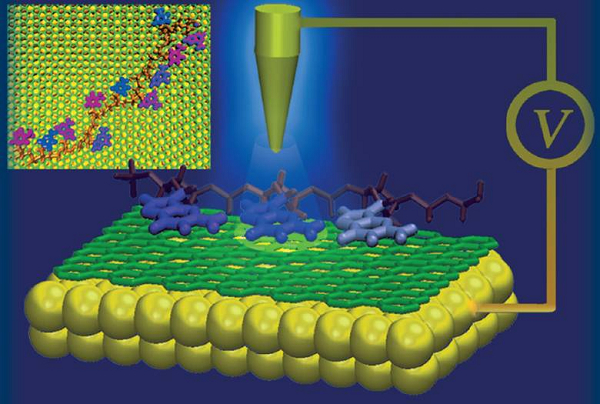






Electric conductivity of single bio-molecules is of great importance not only for observing/detecting their conformations, concentrations and electronic structures, but also for a variety of nanoscale applications, including biosensor, biochip and scanning tunneling microscopy (STM) based DNA identification. Nevertheless, such important applications are often hindered by the presence of large noises, leading to low signal-to-noise ratios. This is partly due to the absence of materials which have both an excellent conductivity inducing large electric signals, and a good adsorption for bio-molecules to induce strong substrate–molecule (or electrode-molecule) coupling, which greatly reduces the noise. B. Song, C. Fan, and H. Fang et al. from Shanghai Institute of Applied Physics, Chinese Academy of Sciences, based on theoretical and experimental studies, have proposed and demonstrated that the material composed of graphene on an Au(111) surface can stably adsorb carbon-based rings in bio-molecules, and also has excellent conductivity. By using this material as the substrate, the signal-to-noise ratio is found to be so high that the signal is clearly distinguishable for different nucleobases in DNA sequence. The key to this unique property is that graphene can stably adsorb carbon-based rings, which are widely present in bio-molecules, due to π-stacking interactions, while the substrate retains the excellent conductivity from the gold.
